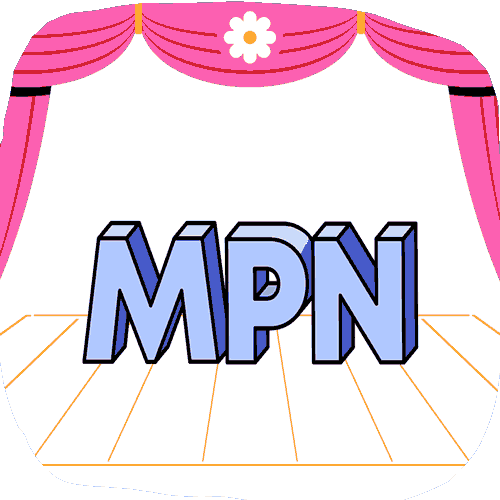How to Navigate CA's MPN Horror Show (and Get Paid)

As we’ve demonstrated repeatedly, California’s Medical Provider Network (MPN) system is a providers’ biggest obstacle to securing reimbursement for treating injured workers.
It’s also a state-sanctioned obstacle. California law makes providers financially liable for determining their own eligibility to treat each injured worker, as claims administrators may deny payment for treatment by a non-MPN provider. Accordingly providers must always ascertain the following:
- If the injured worker’s care is restricted to an MPN, and
- Whether the provider is a member of that MPN (if an MPN applies to the injured worker)
Below, learn the 10-step process necessary to obtain both critical pieces of information.
If these 10 steps seem like an unfair administrative burden…they are. This verification process is an administrative MPN horror show for providers — but an unfortunate prerequisite to treatment because California fails to provide a reliable way to determine MPN applicability and provider participation.
Providers should NEVER furnish treatment without determining whether an MPN applies to an injured worker, and if so, whether the provider is a member of the MPN.
We’ve advocated for the most obvious and attainable solution: an MPN employer database. We’ve decried (mercifully scuttled) attempts to make the MPN system even more opaque. But until substantive reform — preferably not crafted by network lobbyists — happens, the 10 steps below are the administrative agony required for providers to receive payment.
How to Confirm MPN Applicability & Provider Participation
Strap in, providers and practice staff. The process below is onerous but is the only reliable way to MPN-proof your workers’ comp practice.
The 10 steps we outline are underpinned by California Code of Regulations Section 9767.12, which requires the employer or insurer to provide a “complete written MPN employee notification.” If an MPN applies, this notification must include:
- The unique MPN Identification number
- The MPN web address with the directory of participating providers
- Any instructions or passcodes necessary to access the MPN provider directory
Since even adjusters often do not know whether an MPN applies to an injured worker, the employee MPN notification sent to the injured worker is the only reliable way for a provider to accurately determine if an MPN applies.
The MPN ID number listed in the employee notification is the only reliable way for a provider to accurately determine which MPN applies.
While the process below is onerous and may delay care, any provider treating an injured worker without taking these steps invites the claims administrator to deny payment for that care.
With that, below is the 10-step ‘best practice’ a provider must undertake before treating an injured worker:
- When an injured worker calls to make an appointment, inform the injured worker they must bring their MPN employee notification letter to the first appointment.
- If the employee does not have the MPN employee notification, instruct the employee to request a copy of this document from their claims adjuster before the first appointment.
- Before treating the injured worker, read the MPN employee notification to identify the applicable MPN; typically, this information is found on page 7 of the nine-page notification.
- Always make a copy of the MPN employee notification to document the MPN ID number for billing purposes (or to prove that no MPN applies to the injured worker).
- If an MPN is listed, note the MPN ID, MPN website URL, and any password necessary to access the MPN website's list of approved physicians and ancillary service providers.
- Enter the MPN ID number into the search field of the online MPN list maintained by the Division of Workers’ Compensation (DWC) to confirm the MPN is approved (as opposed to the vast majority of MPNs that are terminated, suspended, withdrawn, or revoked).
- Access the MPN website that lists the providers eligible to treat the injured worker.
- On the MPN website, search for the provider's name and address. Remember, even if the provider is listed as MPN-approved, the location at which the treatment is rendered must also be an MPN-approved location.
- If the provider's name and practice location are listed in the MPN, take a screenshot that includes the website URL with evidence of the date and time of the screenshot.
- Important: Note that the screenshot is not definitive proof of MPN membership. California regulations require MPNs to update their websites and provider rosters only 4 times yearly, so that information may be outdated.
If urgent treatment is required, there is no path for a physician to confirm whether an MPN applies to the injured worker, as the worker cannot furnish the MPN employee notification in an emergency situation.
Unfortunately for providers, if the claims administrator subsequently denies payment for urgent treatment due to the provider's lack of MPN membership, no recourse is available. Accordingly, physicians must recognize the financial risks inherent in urgent care since 10-step MPN verification is impossible.
MPNs: CA’s Payment Trap for Providers
California should be ashamed of the above-noted MPN Horror Show, especially considering the already extraordinarily burdensome administrative requirements imposed on workers’ comp for providers.
But unfortunately for providers, California set the perfect payment trap.
Providers are unfairly imperiled by the financial liability of MPN verification. If the provider does not obtain a copy of the MPN employee notification letter, claims administrators can easily (and do easily) deny payment, citing that the treatment was rendered out-of-network — whether that’s true or not.
Providers, don’t roll the dice.
To undertake all the work necessary to render compliantly and bill for treatment, only to be denied payment (falsely or otherwise) due to MPN malarkey is a disservice to your practice.
If completing the steps above takes time and delays care, that is not your failure. That is California's disservice to injured workers with its continued adherence to the barely-regulated, opaque, and abusive MPN system.
Make workers’ comp easy. Harness the power of daisyBill software, data, and expertise for faster, better workers’ comp billing. Request a demo below.
REQUEST DEMO
DaisyBill provides content as an insightful service to its readers and clients. It does not offer legal advice and cannot guarantee the accuracy or suitability of its content for a particular purpose.




.gif)
